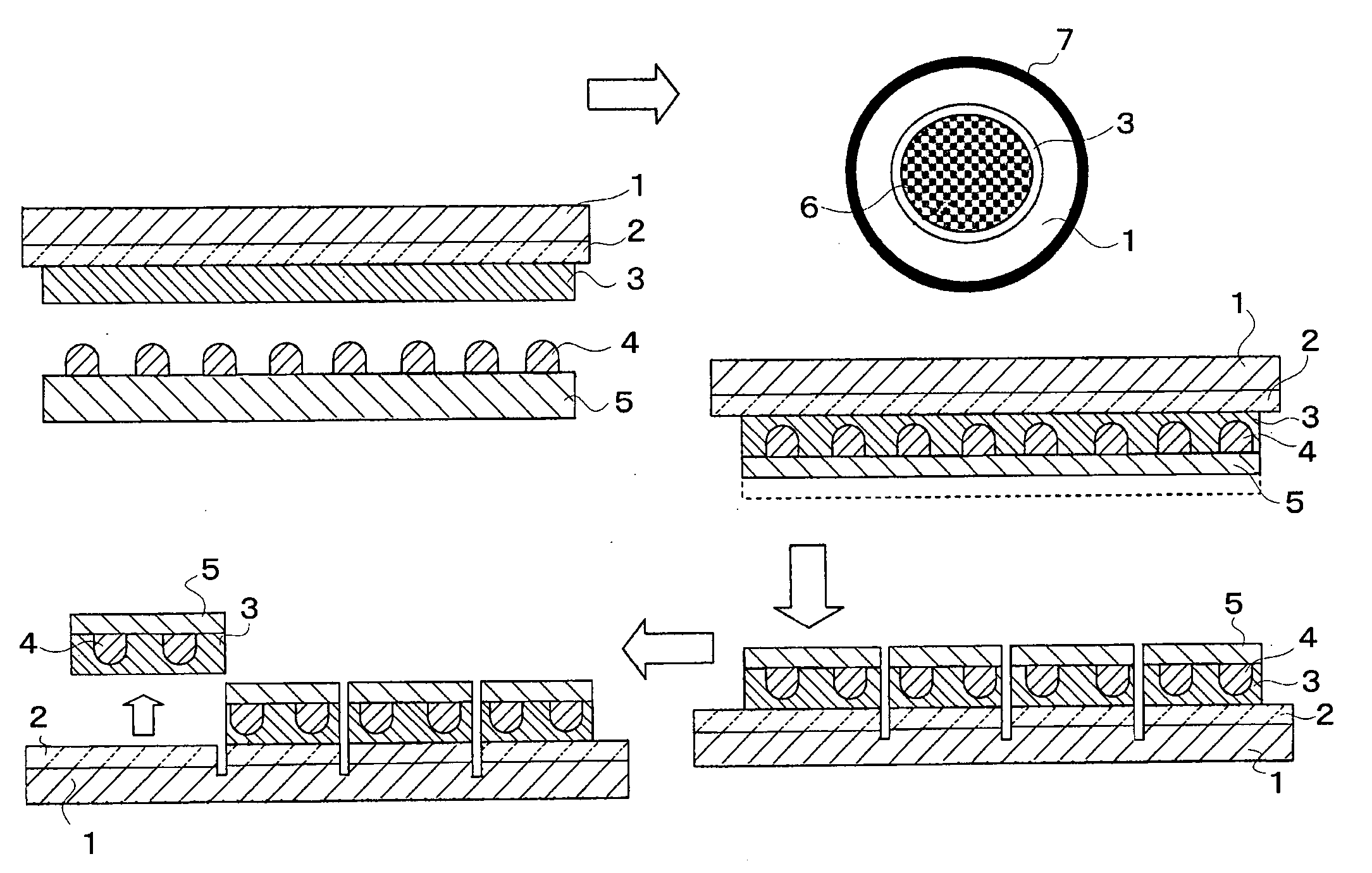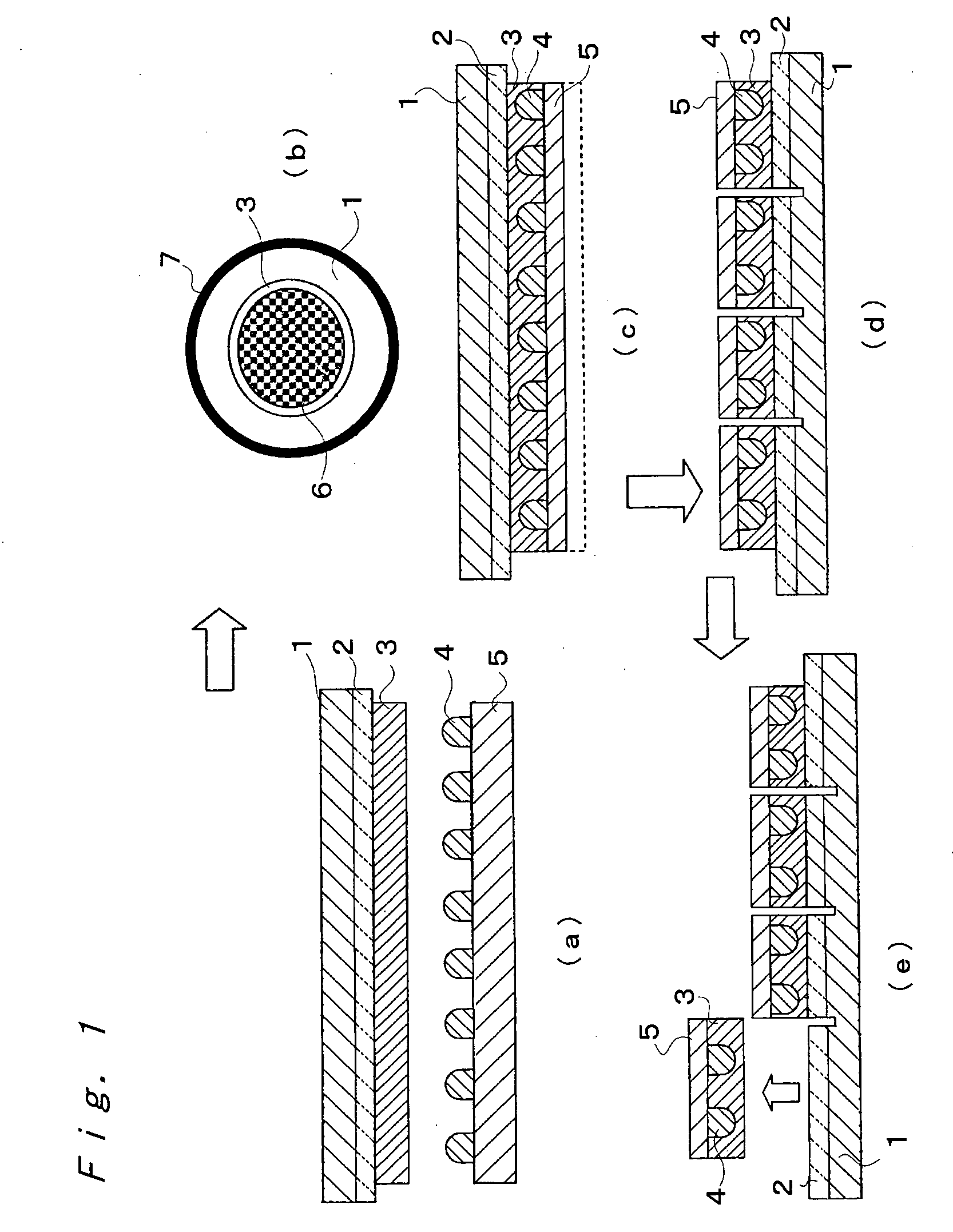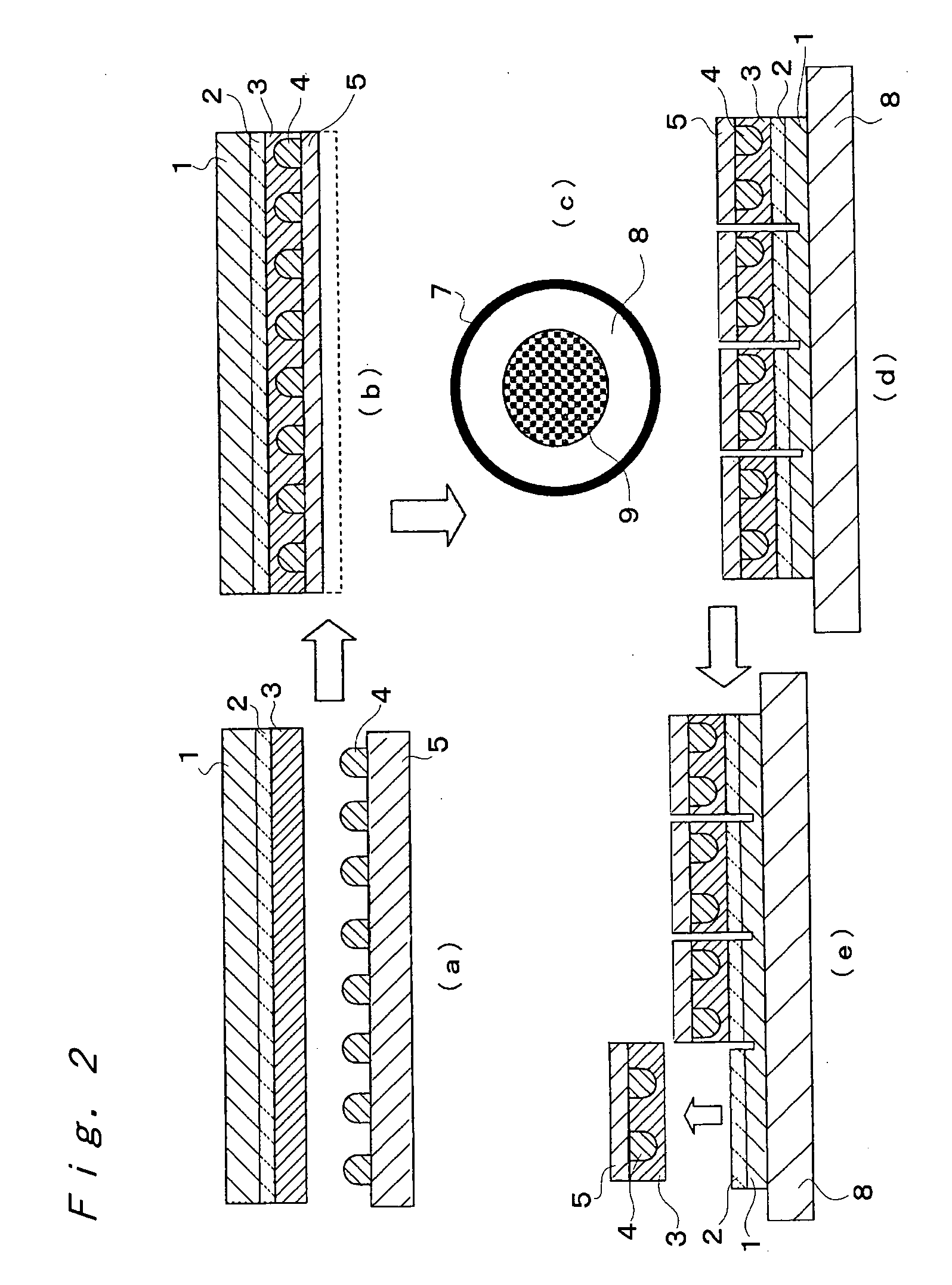Method of producing a semiconductor device, and wafer-processing tape
- Summary
- Abstract
- Description
- Claims
- Application Information
AI Technical Summary
Benefits of technology
Problems solved by technology
Method used
Image
Examples
examples
[0066] Each of the characteristics in the following examples were tested and evaluated, according to the following tests. The “part(s)” means a part(s) by mass. [0067] 1. Gel fraction: About 0.05 g of the removable adhesive layer was weighed, it was dipped in 50 ml of xylene for 24 hours at 120° C., and then the resultant xylene was filtered through a stainless-steel net of 200 meshes, and the resultant insoluble constituents remained on the net were dried for 120 minutes at 110° C. Then, the mass of the thus-dried insoluble constituents was weighed, to determine a gel fraction, according to the formula shown below: Gel fraction (%)={(Mass of insoluble constituents) / (mass of weighed removable adhesive layer)}×100 [0068] 2. Removable adhesive double bond amount: The amount of carbon-carbon double bond contained in about 10 g of the heated and dried removable adhesive agent was measured and quantitatively determined by a mass increasing method by bromine addition reaction in a dark pl...
examples 1 to 7
[0089] Any one of the wafer-processing tapes obtained by the combinations, as shown in Table 1, from which the carrier film had been peeled off, was, respectively, adhered to a 5-inch wafer with a gold stud bump under heating on a hot plate at 80° C., and then the backside of the circuit substrate was ground using a backside grinder, to make the circuit substrate have a finish thickness of 50 μm. Then, the circuit substrate was irradiated with UV at a dose of 1,000 mJ / cm2 in the state that the processing tape was adhered to the circuit substrate, followed by dicing into chips each of which was 10 mm×10 mm square. The resultant chips were picked up by a pickup die bonder, and flip chips were packaged in accordance with the electrode position of the resin substrate, to produce a semiconductor device.
TABLE 1Example 1Example 2Example 3Example 4Example 5Example 6Example 7Support of protective tapePEPEPEPEPEPEPEProtective tape removable adhesive agent1A2A3A4A5A6A—compositionCompound (A)...
PUM
| Property | Measurement | Unit |
|---|---|---|
| Temperature | aaaaa | aaaaa |
| Temperature | aaaaa | aaaaa |
| Fraction | aaaaa | aaaaa |
Abstract
Description
Claims
Application Information
 Login to View More
Login to View More - R&D
- Intellectual Property
- Life Sciences
- Materials
- Tech Scout
- Unparalleled Data Quality
- Higher Quality Content
- 60% Fewer Hallucinations
Browse by: Latest US Patents, China's latest patents, Technical Efficacy Thesaurus, Application Domain, Technology Topic, Popular Technical Reports.
© 2025 PatSnap. All rights reserved.Legal|Privacy policy|Modern Slavery Act Transparency Statement|Sitemap|About US| Contact US: help@patsnap.com



